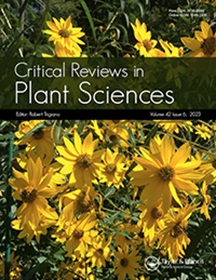植物-内生菌联合的多面世界的生态学透视
IF 6
2区 生物学
Q1 PLANT SCIENCES
引用次数: 22
摘要
摘要在自然条件下,植物不是个体;它们与不同的微生物群结合形成植物全生物。为了解决与植物健康相关的问题,人们正在积极探索植物全生物的概念。内生植物是一类与植物相关的微生物,存在于植物的内部组织中。到目前为止,它们在所有研究的植物中都有广泛的报道。植物-内生菌的相互作用可能表现出不同的共生结合模式,从有益的(互利共生)、中性的(共生)到致病的。尽管我们对影响植物与微生物相互作用的因素有一个大致的了解,但微调它们之间关系的复杂性才刚刚开始显现。围绕植物内生菌共生的一些相关问题包括:内生菌与根瘤菌、菌根和根细菌等其他有益微生物有何不同?什么机制可以确保内生菌在不引发强烈防御反应的情况下获得无与伦比的进入和定植?为什么同一微生物物种的不同菌株会进入与植物共生的不同模式?是什么因素导致了内生菌生活方式的改变?在本综述中,这些问题已经根据最近的数据得到了解决,最后得出了内生菌研究的空白,可以在未来的工作中加以考虑。本文章由计算机程序翻译,如有差异,请以英文原文为准。
An Ecological Insight into the Multifaceted World of Plant-Endophyte Association
Abstract Under natural conditions plants are not individual entities; they are associated with diverse microbiota to form the plant holobiont. The concept of plant holobiont is being actively explored to address the issues related to plant’s health. Endophytes are a class of plant-associated microbes, which reside within the internal tissues of plants. They have been ubiquitously reported in all plants investigated so far. The plant-endophyte interactions may exhibit different modes of symbiotic association, ranging from beneficial (mutualism), neutral (commensal), to even pathogenic. Although we have a fair idea of the factors affecting plant-microbe interactions, the intricacies involved in fine-tuning their association are just beginning to unfold. Some of the pertinent questions surrounding the plant-endophyte symbiosis include: how are endophytes different from other beneficial microbes like rhizobia, mycorrhizae, and rhizobacteria? What mechanisms ensure that endophytes gain an unsurpassed entry and colonization into plants without eliciting a strong defense reaction? Why do different strains of the same microbial species enter into diverse modes of symbiotic association with plants? What factors cause the switch in the lifestyle of endophytes? In the present review, these questions have been addressed in the light of recent data and finally, concluded with gaps in endophyte research, which could be deliberated in future endeavors.
求助全文
通过发布文献求助,成功后即可免费获取论文全文。
去求助
来源期刊
CiteScore
12.90
自引率
1.40%
发文量
15
审稿时长
>12 weeks
期刊介绍:
Critical Reviews in Plant Sciences focuses on presenting in-depth and up-to-date reviews of timely and/or cutting-edge subjects in the broad discipline of plant science, ranging from molecular biology/biochemistry through the areas of cell biology, plant pathology and physiology, genetics, classical botany, and ecology, to practical agricultural applications. Articles in the journal provide an up-to-date literature base for researchers and students, pointing the way towards future research needs. The journal is also a significant source of credible, objective information to aid decision makers at all levels.

 求助内容:
求助内容: 应助结果提醒方式:
应助结果提醒方式:


